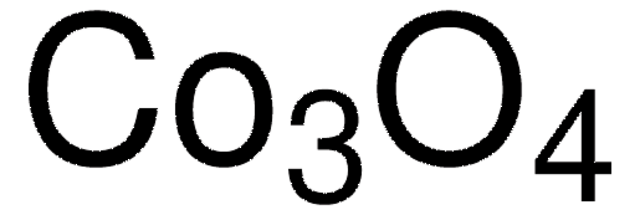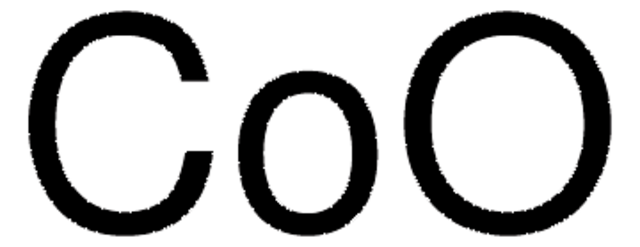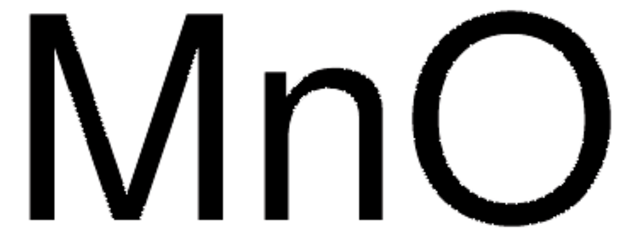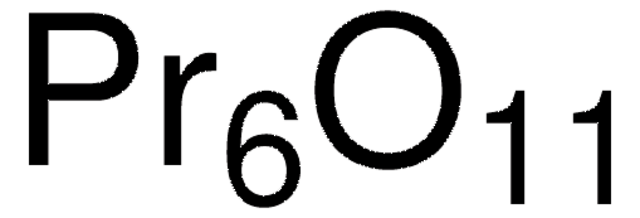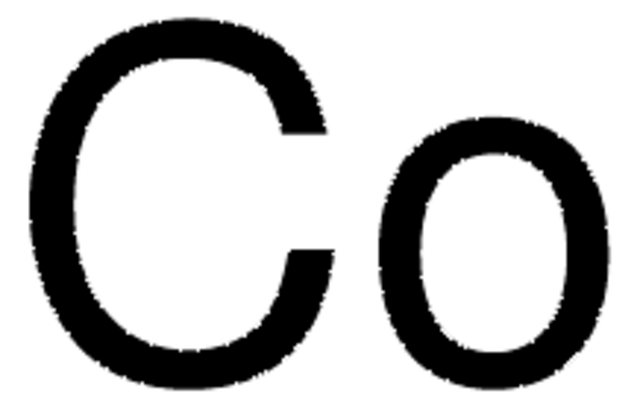Kluczowe dokumenty
221643
Cobalt(II,III) oxide
powder, <10 μm
Synonim(y):
Cobaltosic oxide, Tricobalt tetraoxide
About This Item
Polecane produkty
Postać
powder
Poziom jakości
wielkość cząstki
<10 μm
mp
895 °C (dec.) (lit.)
gęstość
6.11 g/mL at 25 °C (lit.)
Zastosowanie
battery manufacturing
ciąg SMILES
O=[Co].O=[Co]O[Co]=O
InChI
1S/3Co.4O
Klucz InChI
LBFUKZWYPLNNJC-UHFFFAOYSA-N
Szukasz podobnych produktów? Odwiedź Przewodnik dotyczący porównywania produktów
Powiązane kategorie
Opis ogólny
Zastosowanie
- Synthesis of diphenylalanine/cobalt oxide hybrid nanowires and their application to energy storage.: This study demonstrates the synthesis of hybrid nanowires using diphenylalanine and cobalt oxide, highlighting their potential for enhancing energy storage capacities (Ryu et al., 2010).
Hasło ostrzegawcze
Danger
Zwroty wskazujące rodzaj zagrożenia
Zwroty wskazujące środki ostrożności
Klasyfikacja zagrożeń
Aquatic Chronic 3 - Carc. 1A Inhalation - Resp. Sens. 1
Kod klasy składowania
6.1C - Combustible acute toxic Cat.3 / toxic compounds or compounds which causing chronic effects
Klasa zagrożenia wodnego (WGK)
WGK 1
Temperatura zapłonu (°F)
Not applicable
Temperatura zapłonu (°C)
Not applicable
Wybierz jedną z najnowszych wersji:
Masz już ten produkt?
Dokumenty związane z niedawno zakupionymi produktami zostały zamieszczone w Bibliotece dokumentów.
Klienci oglądali również te produkty
Produkty
Magnetism and magnetic materials have been of scientific interest for over 1,000 years. More recently, fundamental investigations have focused on exploring the various types of magnetic materials and understanding the magnetic effects created by electric currents.
Magnetic materials permeate numerous daily activities in our lives. They are essential components of a diversity of products including hard drives that reliably store information on our computers, decorative magnets that keep the shopping list attached to the refrigerator door, electric bicycles that speed our commute to work, as well as wind turbines for conversion of wind energy to electrical power.
Nasz zespół naukowców ma doświadczenie we wszystkich obszarach badań, w tym w naukach przyrodniczych, materiałoznawstwie, syntezie chemicznej, chromatografii, analityce i wielu innych dziedzinach.
Skontaktuj się z zespołem ds. pomocy technicznej